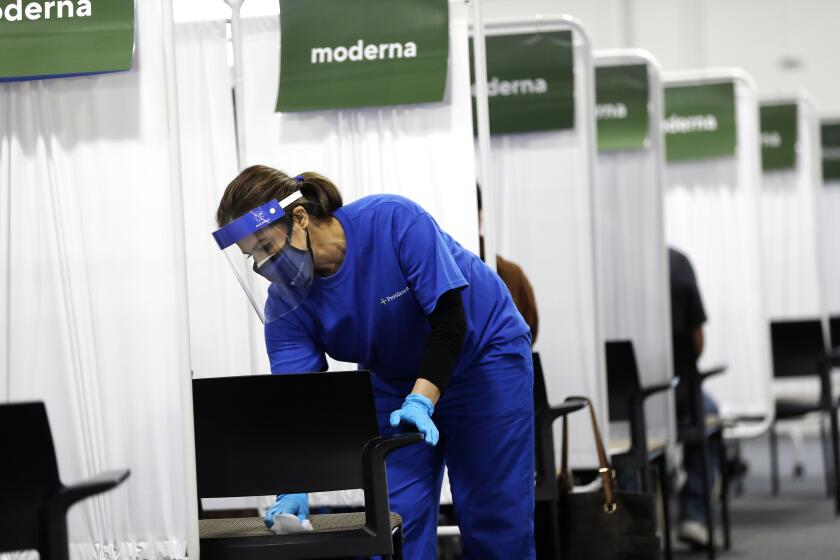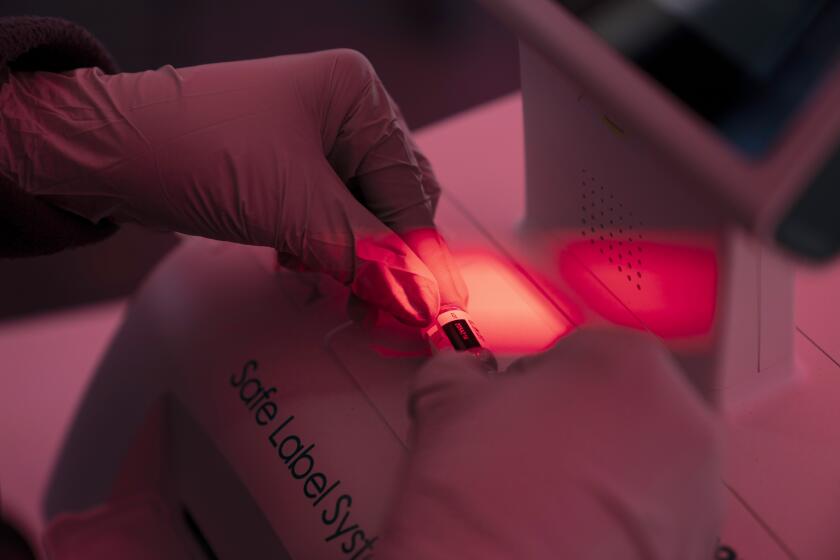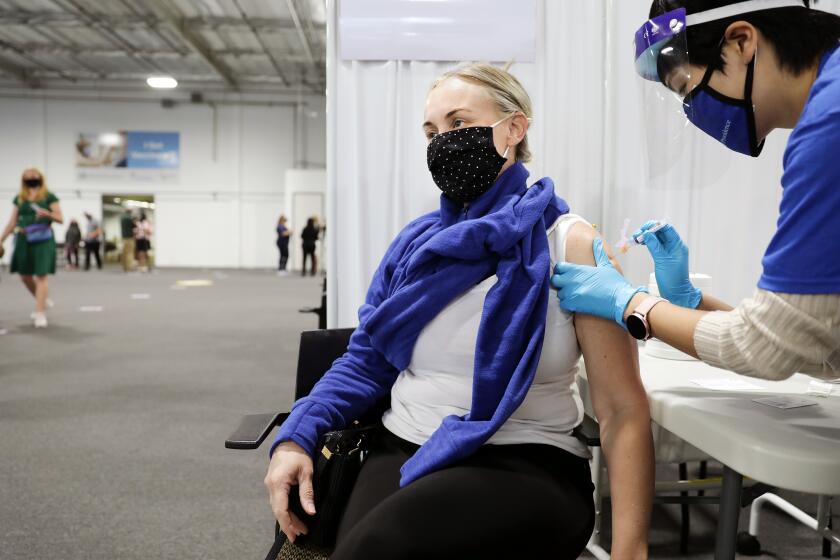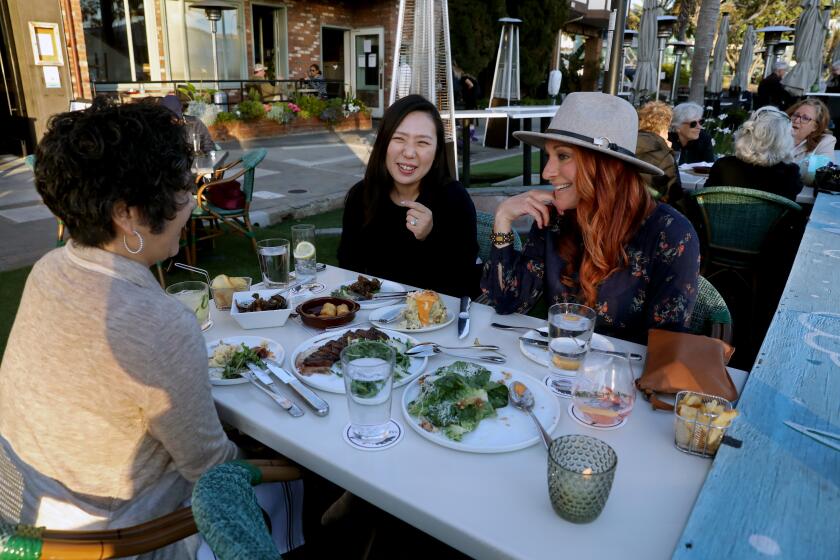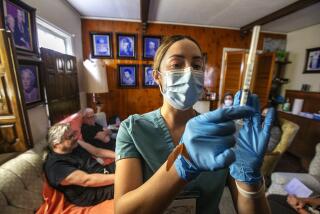Johnson & Johnson vaccine shipments to California resume as COVID cases keep falling
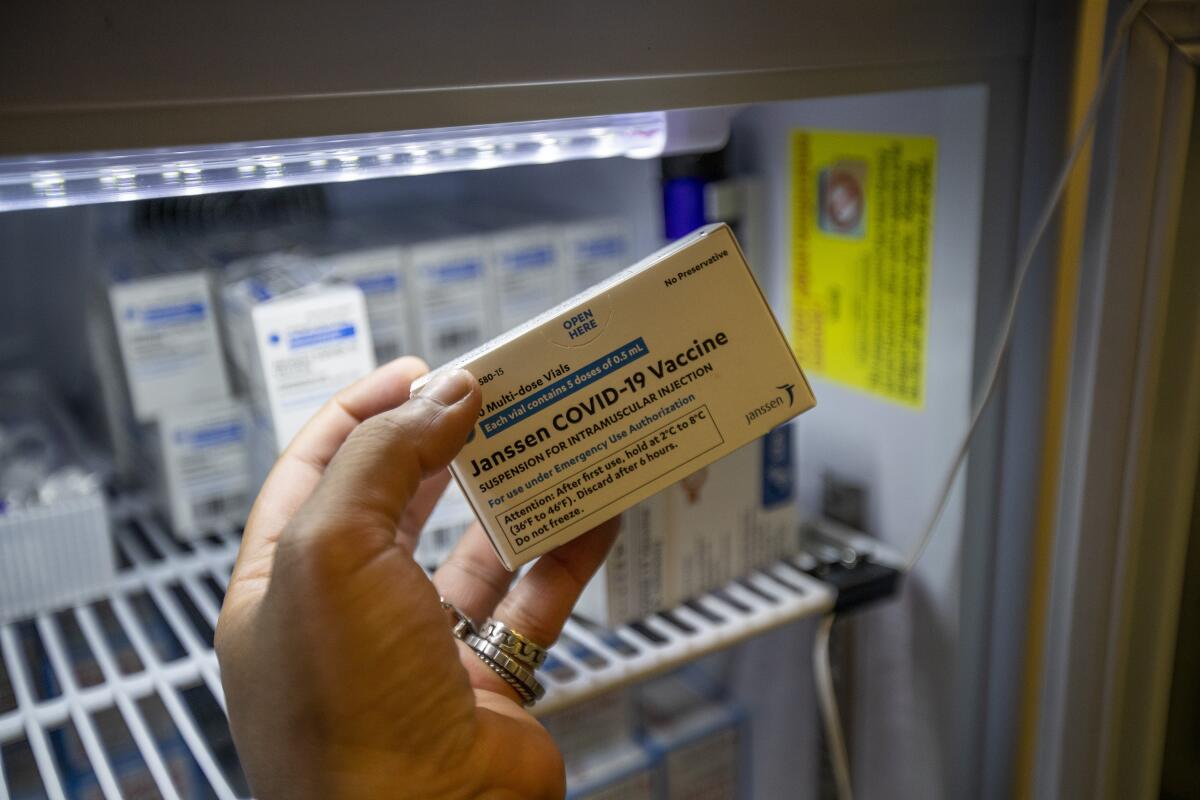
- Share via
California is poised to receive almost 90,000 doses of the Johnson & Johnson vaccine next week as U.S. officials resume supplies of the single-shot COVID-19 vaccine.
The expected allocation of 87,800 doses would be the first direct federal shipment of J&J shots since the week of April 12 — when administration of the vaccine was temporarily halted while health officials investigated reports of a rare blood-clotting disorder among a handful of recipients.
Federal health agencies lifted the pause after 10 days last Friday, clearing the way for the shots to resume.
Along with Johnson & Johnson, California is slated to receive roughly 1.15 million doses of the Pfizer-BioNTech vaccine and 857,200 doses of the Moderna vaccine next week.
The Pfizer and Moderna allocations are flat from this week, according to data from the U.S. Centers for Disease Control and Prevention. However, state officials have noted that these doses represent only one of the supply streams flowing into California, as the federal government also directly allocates doses to other locations including qualified health centers and pharmacies.
Doses given were down about 16% from a statewide peak of nearly 400,000 a week, a number recorded two days before officials sought a halt to J&J shots.
Opening the tap on Johnson & Johnson shipments could boost California’s inoculation pace, which has lagged somewhat since the stoppage.
For the week ending Monday, providers throughout the state administered an average of 318,098 doses per day — down about 20% from the statewide peak of 395,328 per day during the week ending April 11, according to data compiled by The Times.
Officials and experts have said they believe the recent pause in J&J shots should be a source of comfort, not consternation, for those who have yet to roll up their sleeves.
“We have a vaccine safety program that’s really 100% transparent so that people can understand that, when there are flags that get raised around safety, very quickly [the] CDC and the [Food and Drug Administration] are going to act on all of our behalf to make sure they look into those situations and verify whether or not we can continue to use the vaccine,” Los Angeles County Public Health Director Barbara Ferrer said this week.
As of last Friday, the CDC had reported the clotting condition in 15 women — out of the 8 million people who had received the vaccine nationwide.
Another possible case has since been reported in a Bay Area man in his 30s, according to officials at UC San Francisco.
Vaccine demand is dwindling, but that doesn’t mean everyone in California who wants one can get one — as one Bay Area doctor can attest.
“After a very comprehensive safety analysis, our nation’s top scientists and experts have come to the conclusion that the benefits of the vaccine far outweigh the extremely minimal risk,” L.A. County Supervisor Hilda Solis said this week.
All three available vaccines “have saved countless lives,” she added.
While one guiding mantra throughout the rollout has been that the “best” vaccine is the one that’s available, health officials also acknowledge that some may be uneasy about receiving the Johnson & Johnson version.
“Time is now of the essence. If your concerns are just about Johnson & Johnson, then please come in and get a vaccine with Moderna or Pfizer,” Ferrer said. “If your concern is about vaccine safety overall, participate in our town halls, talk to your provider, talk to people you trust in your communities, talk to people who are already vaccinated so that you can make an informed decision and you can know how important it is for people to get vaccinated.”
It’s unclear whether a more robust supply of Johnson & Johnson doses will be enough to reaccelerate California’s inoculation campaign. Some officials have expressed concern that the number of people ready and eager to get vaccinated is dwindling, leaving a group who need more convincing, or outwardly resist the idea.
The result would be a shift from where supply is the chief constraint to one in which demand is the primary roadblock to reaching the level of herd immunity needed to end the pandemic.
“We want to reach all people, and what happens at this point in the process is each person we try to reach becomes a little harder to reach,” said Dr. Kirsten Bibbins-Domingo, epidemiology and biostatistics chair at UC San Francisco. “It’s not as easy as putting up a mass vaccination site and saying if you build it, they will come.”
And there are signs that residents are no longer clamoring for shots as they once did. Both L.A. and San Diego — California’s two most populous counties — have recently begun accepting walk-ups at their vaccination sites, a far cry from the earlier days of the rollout, when appointment slots were snatched up faster than Bad Bunny tickets.
Appointments also appear to be widely available in Orange, Riverside, San Bernardino and Ventura counties. Some counties in Northern California are also reporting a healthy supply.
Los Angeles County continues a drop-in COVID vaccination option for anyone 16 and older. Appointments are wide open in other counties too.
Rural Humboldt County even declined 1,000 extra doses last week amid lackluster demand.
There are a number of reasons people may be hesitant about receiving the vaccine, officials and experts say. Some may be uneasy for political reasons or because their communities have historically been underserved, overlooked or even exploited by the medical community.
Others may resist because they’re unsure about the vaccine development process or because they’re young and healthy and don’t believe they could fall seriously ill from COVID-19.
“A big part of our effort now is to convince younger adults to take a few minutes to schedule a vaccination appointment,” San Bernardino County Supervisor Curt Hagman said in a statement. “The more people who get vaccinated, the fewer infections we will see.”
Doctors and other health experts weigh in on what they feel comfortable doing as coronavirus cases in California continue to plummet.
Though the pace of inoculations has slowed, California is still closing in on a major milestone: 30 million total doses administered.
To date, 47.9% of Californians have received at least one vaccine dose and 29.4% are considered fully vaccinated, CDC data show.
With more Californians at least partially protected, , the state is also seeing a steady decline in infections.
Over the last week, California has reported an average of 1,782 new coronavirus cases per day — a 42% decrease from two weeks ago, according to data compiled by The Times. Case counts haven’t been that low since last spring.
The state has seen similarly steep declines in hospitalizations and deaths in the months since the fall-and-winter surge.
The Associated Press contributed to this report.
More to Read
Sign up for Essential California
The most important California stories and recommendations in your inbox every morning.
You may occasionally receive promotional content from the Los Angeles Times.
